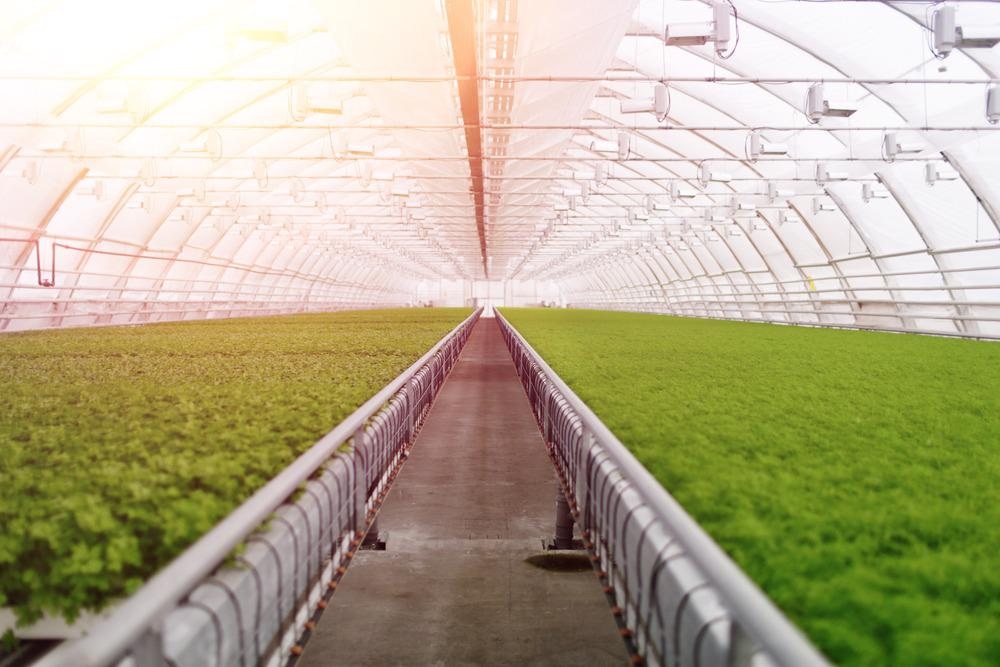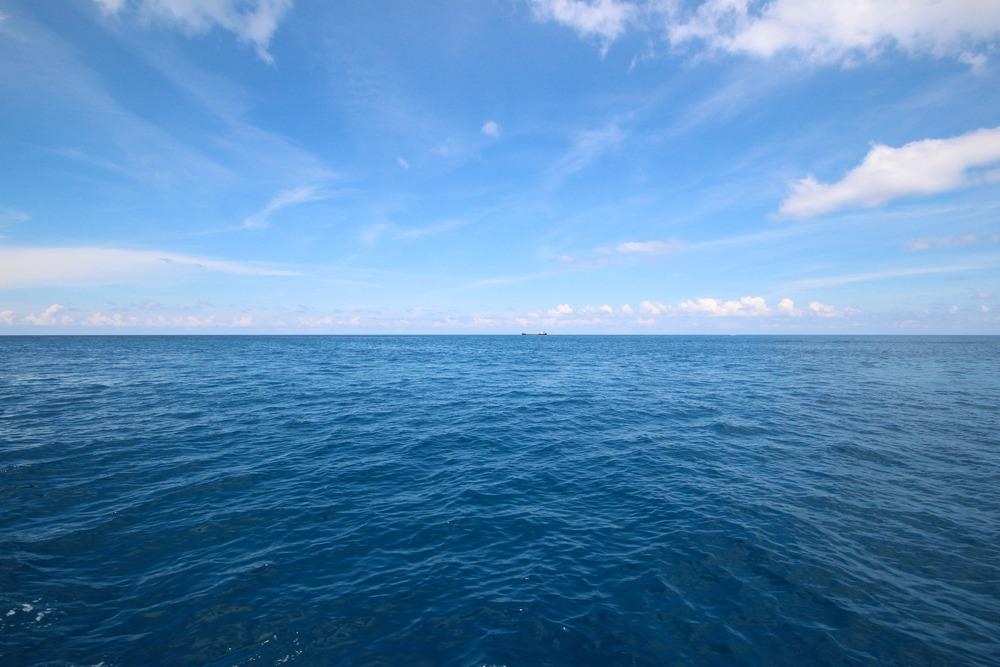Food production is expected to change in the future, with a growing reliance on fisheries and aquaculture, but the production itself is also going to change with the implementation of genetic manipulation, robots, and further technological innovation.

Image Credit: WAYHOME studio/Shutterstock.com
Emerging alternatives to address current declines in food productivity
The global demand for food and fiber increasing estimated to increase up to 70% by 2050. For meat alone, projections estimate that the world will need another 500 megatonnes of meat per year by 2050 to feed the growing human population.
However, malnutrition is already spreading, and scaling up the production of land-derived food crops is even more challenging due to declining yield rates and competition for land and water. This is exacerbated by an increasingly harsher climate, declining soil and water quality, and growing socioeconomic disparities.
In response, alternative sources of food and primarily protein have been developed. From edible insects, lab-grown meat or cheese, and plant-bases proteins, food scientists are focusing on providing efficient and affordable alternatives. Developing new foods and changing existing practices is therefore at the forefront of food research, with many questions remaining including where our food will come from, how it will be produced, and what technology will it depend on.
Green and blue - future food may rely more on the sea
Currently, food from the sea only represents 17% of edible meat production, but this proportion may increase rapidly in the future. In a review by Costello et al, scientists project that by 2050, edible food from the sea could increase by 21 to 44 million tonnes by 2050, which would be between a 36 to 74% increase compared to current yields.
The researchers based their models on current and projected food production across wild fisheries, finfish mariculture, and bivalve mariculture, from which supply curves were calculated under various socioeconomic and technological constraints. From these curves, the authors present a case that food from the sea could supply 12 to 25% of the estimated increase in all meat needed to feed 9.8 billion people by 2050.
These findings were also echoed by Anderson et al in 2017, who demonstrated aquaculture is already the fastest-growing type of meat production and well on the way to meet higher demands in the future. In 1970, wild-caught fisheries only made up 4% of total agricultural production, and aquacultural efforts only accelerated in the 1980s due to wild stocks reaching a plateau.
Such rapid acceleration is likely to continue into the future despite rising concerns of overfishing and climate change, with technology increasing fishing efforts, husbandry success, and overall yield.
However, the researchers also show that 90% of the world’s aquacultural activities are in developing countries, and are a key source of income and sustenance. This disproportionate amount of activity also means that the risks of climate change on fisheries will affect developing nations the most.
The impacts of environmental change and socioeconomic disparities have led food scientists to develop tools that do not rely upon natural systems, reducing the dependency on variable sources of food and stabilizing food security in the future.

Image Credit: K_Dreamcatcher/Shutterstock.com
Microbiome and genetic manipulation – developing the tools to supply future food demand
In recent decades, the golden age of molecular science has co-occurred with increasing awareness of the importance of microbes. This has provided key tools to combat pests and pathogens, including the manipulation of the phytomicrobiome, which is argued to be the most effective approach to improve farm productivity and food quality sustainably by Singh and Trivedi (2017).
Authors argue that the use of chemicals such as fertilizers and pesticides has increased agricultural productivity and increased food access and alleviated poverty around the world. However, excessive and indiscriminate use of these products has resulted in food contamination, negative environmental outcomes, and disease resistance which together have a significant impact on human health and food security.
To avoid such issues, microbiome technology provides an alternative to increasing the quality and quantity of farm produce with less resource-based inputs. This could be done by harnessing the plant microbiome and using molecular tools to improve crop health focusing on higher yield and quality.
In turn, this would reduce the use of chemical pesticides with environmental and health implications, improve existing methods for using soil and water, produce a better quality of food with less chemical contamination and allergens, and cut losses by improving crop fitness in extreme weather or future change scenarios.
However, such innovation relies heavily on technological progress to improve existing toolkits such as CRISPR, and develop new, more effective methods.
Future technology: a necessary improvement to ensuring productivity
In a 2018 paper by Khan et al, the authors review a key part of a revolutionary agricultural technology, which is the use of robotics. The use of robots is increasing across sectors from industrial factories to transport, and this is spreading to agriculture rapidly.
From planting and husbandry to packaging and delivery, robots have the capacity to improve productivity in unforeseen ways. According to the 2015 executive summary of World Robotics, there was a 27% increase in robot orders for the food and beverage industry in 2015 alone.
Authors discuss how the present-day food handling and packaging setup is limited in capacity and output due to manual processing but a robotized process could be automated to reduce labor costs, ensure ensuring high quality and hygienic environments and improve efficiency.
The review then describes a number of robots that perform various tasks from food defect identification and inspection through robot learning, to the use of multiple spectrum cameras for on micro–Unmanned Aerial Vehicles (μUAV) to conduct aerial surveys are conducted to estimate forest area and crop fields.
Nevertheless, the future of food faces several key challenges that impede the progress of food innovation.
Challenges to the progress of future food
A key challenge for the future of food remains the progress of food science to improve existing practices and continuously develop new ones, which relies on innovation on both theoretical and technological fronts.
To date, studies indicate that technology must be integrated to ensure progress, with developments such as remote sensing, satellite, and sensor-based technologies, and microbiome tools being key platforms to ensure food security.
In parallel to these innovations, challenges with social and regulatory policies will require simultaneous attention. Public acceptance of microbiome-based products is key for the success of these technologies, and multidirectional communication among all stakeholders will ensure success.
This was discussed in a 2019 review by Sexton et al, who presented a series of tensions underpinning contested food futures surrounding livestock and alternative protein sources. The authors argue that the debate of livestock production as the main protein source is a longstanding debate that cannot be resolved easily.
The authors then provide several potential solutions to solving potential points of tension, including the need for better communication between livestock stakeholders and ecological advocates as well as those advocating for genetically modified foods and those advocating for organic foods.
In addition to improving communication, the standardization of regulatory requirements at intergovernmental levels will provide better access to people as well as ensure the efficacy and safety of products to develop public confidence in technologies.
Nevertheless, the most significant challenges overshadowing technological progress and public perception remain the potential economic, environmental, and social impacts of environmental change and habitat degradation. These represent a source of rapid resource depletion engineered by unsustainable practices, which require extensive international efforts to unlock a sustainable future for food production around the world.
Sources:
- Costello, C., Cao, L., Gelcich, S., Cisneros-Mata, M., Free, C. M., Froehlich, H. E., Golden, C. D., Ishimura, G., Maier, J., Macadam-Somer, I., Mangin, T., Melnychuk, M. C., Miyahara, M., de Moor, C. L., Naylor, R., Nøstbakken, L., Ojea, E., O’Reilly, E., Parma, A. M., . . . Lubchenco, J. (2020). The future of food from the sea. Nature, 588(7836), 95–100. https://doi.org/10.1038/s41586-020-2616-y
- Khan, Z. H., Khalid, A., & Iqbal, J. (2018). Towards realizing robotic potential in future intelligent food manufacturing systems. Innovative Food Science & Emerging Technologies, 48, 11–24. https://doi.org/10.1016/j.ifset.2018.05.011
- Sexton, A. E., Garnett, T., & Lorimer, J. (2019). Framing the future of food: The contested promises of alternative proteins. Environment and Planning E: Nature and Space, 2(1), 47–72. https://doi.org/10.1177/2514848619827009
- Singh, B. K., & Trivedi, P. (2017). Microbiome and the future for food and nutrient security. Microbial Biotechnology, 10(1), 50–53. https://doi.org/10.1111/1751-7915.12592
Further Reading
Last Updated: Mar 7, 2022